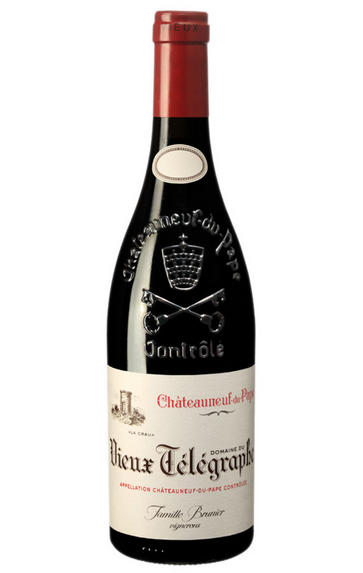
2014 Châteauneuf-du-Pape Rouge, La Crau, Domaine du Vieux Télégraphe, Rhône
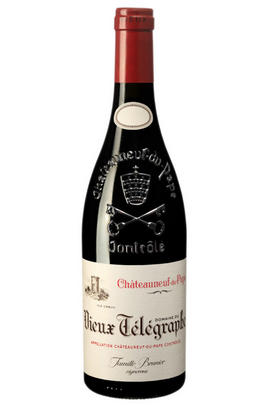
Critics reviews
One of my favorite visits during my time spent working in the southern Rhône is with Daniel Brunier at Domaine du Vieux Telegraph. A large estate, it covers almost 150 acres of prime terroir, mostly in the famed la Crau lieu-dit located around the estate. They’ve streamlined the lineup in the past few years and now release five Châteauneuf du Pape; two whites and three reds.
The vinification here is as traditional as they come, with fermentation occurring without temperature control and all with native yeast. Aging occurs mostly in older foudre and the whole process is very hands off. Nevertheless, I find both the 2013 and 2014 vintages here more mid-weight, simple and straightforward than I expect from this estate.
Jeb Dunnuck eRobertParker.com #221 Oct 2015
About this WINE
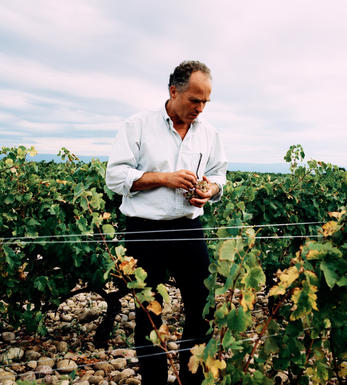
Vieux Telegraphe
Vieux Télégraphe is one of the most renowned estates in the Southern Rhône. Blessed with the finest locations in the area on the famed La Crau plateau, there is an emphasis on terroir expression and natural winemaking. The Bruniers, who own the property, started their love affair with La Crau in 1898 and on which they now own 70ha. This plateau – a Grand Cru equivalent in Châteauneuf-du-Pape – is so reputed for several reasons. Firstly, its galets roules (pudding stones) that re-emit the heat of the sun, producing a warm microclimate ideal for even berry ripening. Beneath these lies a subsoil of clay, which counters excess heat by keeping the vines hydrated and cool. Finally, at 120m altitude, it sits higher than surrounding areas. This brings exposure to wind (notably the Mistral), which again keeps the vines cool and free from diseases (and occasionally frost).
In 2021, the domaine was lucky to have been spared the worst of the flash frost that hit the region in April. Pallières was slightly impacted, but Piedlong and La Crau both emerged unscathed. The family did, nonetheless, see a moderate drop in yield due to the rains, with Vieux Télégraphe down by about 30%. Winemaker Daniel Brunier describes the vintage as classic, breaking the long series of “solaire” vintages we’ve seen since 2015. The wines show freshness but the slow and complete ripening brought about by a later-than-usual harvest brought with it concentration of flavours and balance. Daniel believes the wines will produce some wonderful surprises throughout the course of their ageing.
Alongside their Châteauneuf properties, the Brunier family owns Domaine des Pallières in Gigondas – a mixed farming estate set within the Provençal Forest. There they were not impacted by the rains (or indeed frost) in the same way. Daniel is extremely proud of the vintage. He describes the wines as pure, linear, with more moderate levels of alcohol and showing great sophistication and balance. He believes his Racines to be one of the best he has ever made.
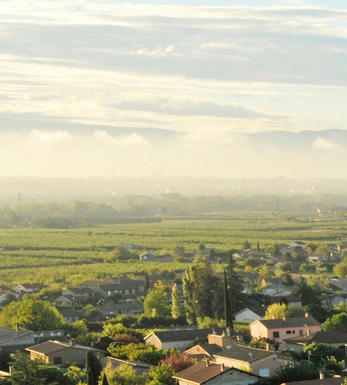
Châteauneuf-du-Pape
The most celebrated village of the Southern Rhône, Châteauneuf-du-Pape is the birthplace of the now indispensable French Appellation d’Origine Contrôlée system – imperfect though it may be. Compared to the Northern Rhône, the vineyards here are relatively flat and often feature the iconic galet pebbles – the precise benefits of which are a source of much debate. Minimum alcohol levels required by the AOC are the highest in France, but at 12.5% it is well below the natural generosity of Grenache, which only achieves its full aromatic potential when it is fully ripe and laden with the resultant high sugars. Syrah and Mourvèdre contribute the other defining elements in the blend, adding pepper, savoury spice and structure to the decadent Grenache. There are a further 10 permitted red grape varieties which can be used to adjust the “seasoning”. Of the five white varieties permitted, it is Grenache Noir’s sibling – predictably perhaps – Grenache Blanc, which dominates, though Roussanne shows a great deal of promise when handled well, notably at Château de Beaucastel.
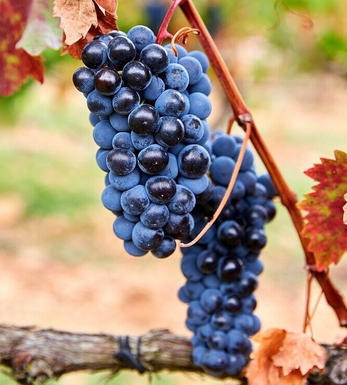
Southern Rhône Blend
The vast majority of wines from the Southern Rhône are blends. There are 5 main black varieties, although others are used and the most famous wine of the region, Châteauneuf du Pape, can be made from as many as 13 different varieties. Grenache is the most important grape in the southern Rhône - it contributes alcohol, warmth and gentle juicy fruit and is an ideal base wine in the blend. Plantings of Syrah in the southern Rhône have risen dramatically in the last decade and it is an increasingly important component in blends. It rarely attains the heights that it does in the North but adds colour, backbone, tannins and soft ripe fruit to the blend.
The much-maligned Carignan has been on the retreat recently but is still included in many blends - the best old vines can add colour, body and spicy fruits. Cinsault is also backtracking but, if yields are restricted, can produce moderately well-coloured wines adding pleasant-light fruit to red and rosé blends. Finally, Mourvèdre, a grape from Bandol on the Mediterranean coast, has recently become an increasingly significant component of Southern Rhône blends - it often struggles to ripen fully but can add acidity, ripe spicy berry fruits and hints of tobacco to blends.


Buying options
Add to wishlist
Description
A somewhat modest colour belies a classic nose of crushed blueberry and bayleaf. The palate is more linear than sometimes at such a precocious age, its fruit character favouring the red over the black, its texture emboldened by notes of iodine and even peat. The finish is strong and peppery however, brimming with potential and confirming Daniel Brunier’s descriptions which focus on 2014’s ‘rare elegance’ and ‘great refinement’.
Drink 2017-2025.
Simon Field MW, Wine Buyer
wine at a glance
Delivery and quality guarantee